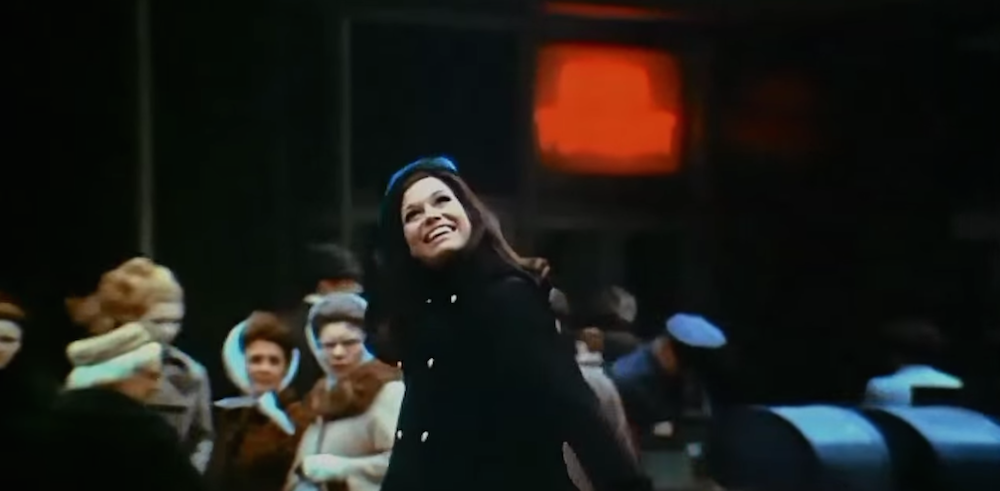Mary Tyler Moore wasn’t born in Minnesota. She never lived there. But the determined young journalist she played for seven years in the 70s did. So on Wednesday, when news of her death broke, The Minneapolis Star Tribune was ready with the story.
In the hours between first hearing news that Moore, 80, was gravely ill and then that the award-winning actress had died, the Star Tribune polished up a pre-written obituary and planned to cover her death for print and digital.
The result wasn’t staggering in terms of pageviews. Coverage of Moore’s death ranked second on the homepage and third in mobile readership Wednesday, but reach on Facebook was what Digital Features Editor Tom Horgen called locally viral. A post with More’s obit got 7,000 likes and 1,200 shares.
“Twelve-hundred shares is kind of astronomical,” he said.
The Star Tribune did it by sharing stories from their archives and appealing to their audience’s sense of community.
From the archives
Last April, the Star Tribune covered another locally meaningful death with one big difference — no one was prepared. When Prince died in April, the Star Tribune’s quick strike team mobilized to cover the story. That gave others in the newsroom a moment to breathe. During that time, Sue Campbell, the assistant managing editor for features, headed for the archives.
Senior arts and entertainment editor Tim Campbell resurfaced a 2004 oral history of Prince’s life. That post had an engagement time of eight minutes.
On Wednesday, the Star Tribune posted Moore’s obit by Neal Justin, but it also had a photo gallery ready to share. On Thursday, Campbell resurfaced a piece from 1996 written by a staffer about the scowling woman behind Moore in the credits of the “Mary Tyler Moore Show.” The sports desk, too, made good use of their archives on day two.
Campbell learned the value of archives when she left newspapers for four years. For part of that time, she worked at PBS’ “Next Avenue,” and there, using the archives was part of their regular work. When she came to the Star Tribune, Campbell brought that mentality with her.
“Being back in newspapers, you forget about it because there’s so much incoming every day, there’s so much new,” she said.
But for local newspapers, there’s also decades and decades of shared history, with stories and photos that helped define that community. It’s a collected identity, Campbell said, and one that local news organizations are in the perfect position to re-share.
“Definitely it’s a sense of place,” Campbell said. “It’s a regionalism. It’s why local and regional newspapers are so important. We’re the keepers of a lot of memories.”
Watch your tone
On Wednesday, journalists at the Star Tribune headed to iconic Minneapolis spots featured in the “Mary Tyler Moore Show” credits, mapped them, covered fan reactions and more. Horgen paid special attention to getting the headlines just right while social media producer Rachel Chazin did the same on social.
The Star Tribune’s biggest hit on Twitter was a simple one from Chazin that captured emotion and a sense of place. It showed an image of a statue made in Moore’s honor and read, simply, “Hats off to you, Mary Tyler Moore. Love, Minneapolis.”
“That type of language and being able to pinpoint what people want to like and want to engage with in these moments is, I think, an art and kind of a science,” Horgen said.
People want to know what’s happening short and long-term, but they also want to share in emotional moments, he said. A normal tweet from the Star Tribune’s main account gets between 10 and 70 likes. That one got more than 1,100, with more than 650 shares.
Horgen is also precise with headlines, knowing that the majority of the audience is visiting the site through through social media referrals. They’re going to be scanned quickly, so they have to be readable, universal and fast.
Appealing to emotion also worked best for the Star Tribune on Facebook, both with words and images. It posted the same obit twice on Wednesday, within an hour of each other.
The first post, which told of Moore’s death and showed an image of her, got more than 800 reactions and more than 380 shares. The second, which repeated the simple language of the Instagram post, got more than 6,000 reactions and more than 1,200 shares.
Sunday is sill the economic engine of the Star Tribune, Horgen said, and they’ll focus next on telling those and other stories in print for that audience.
He feels good about how they covered the news of the actress who made a home, at least on TV, in Minnesota.
She might not have been local, but her impact, and their approach, certainly was.
Correction: An earlier version of this story noted that the Star Tribune resurfaced a Prince oral history after his death. That choice came from senior arts and entertainment editor Tim Campbell, whose name has been added to the story.







